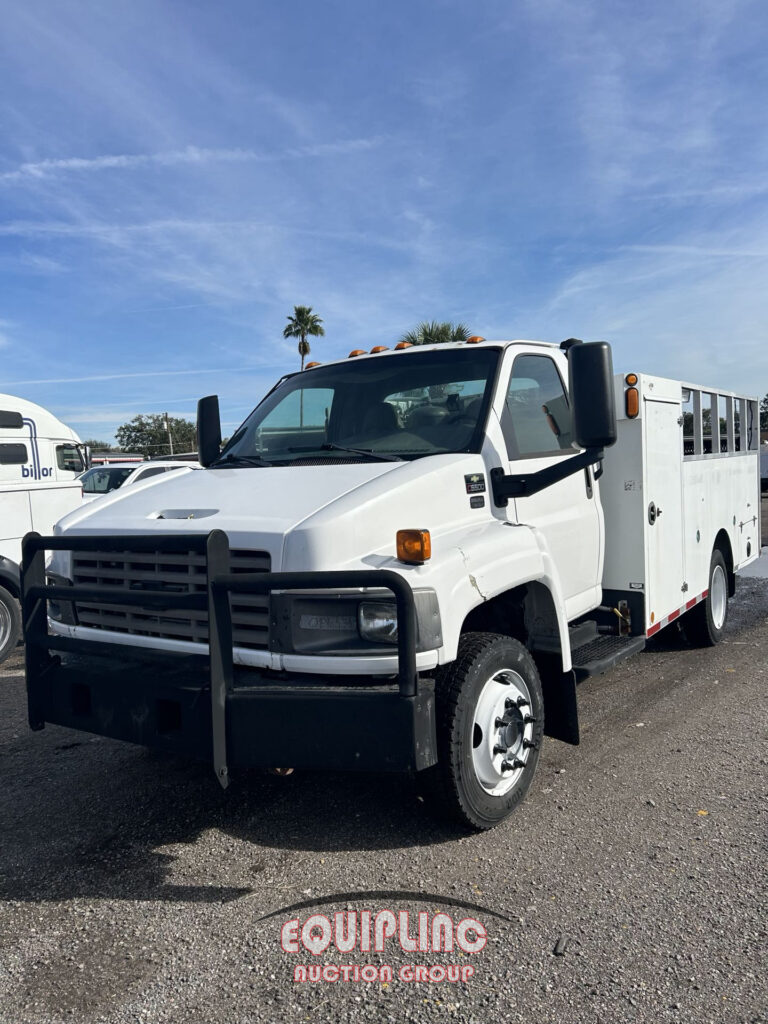Service Body Latch: The Unsung Hero of Utility Vehicle Security and Functionality
Service Body Latch: The Unsung Hero of Utility Vehicle Security and Functionality cars.truckstrend.com
In the demanding world of trades, utilities, and field services, a service body truck is more than just a vehicle; it’s a mobile workshop, a secure storage unit, and often, the lifeline of a business. Within this intricate ecosystem of tools, equipment, and supplies, one component often goes unnoticed until it fails: the service body latch. Far from a mere piece of hardware, a robust and reliable service body latch is the silent guardian of valuable assets, the protector against the elements, and a critical enabler of operational efficiency. This comprehensive guide delves into everything you need to know about these essential mechanisms, from their fundamental purpose to selecting, installing, and maintaining the right ones for your fleet.
I. What is a Service Body Latch and Why Does It Matter?
Service Body Latch: The Unsung Hero of Utility Vehicle Security and Functionality
At its core, a service body latch is a mechanical device designed to securely close and hold shut the doors or compartments of a utility or service truck body. These compartments are integral to organizing and protecting tools, parts, and equipment for professionals ranging from electricians and plumbers to construction workers and emergency responders.
The significance of a high-quality service body latch extends far beyond simply keeping a door closed. Its importance is multifaceted:
- Security: This is paramount. A properly functioning latch, especially one integrated with a robust locking mechanism, is the primary deterrent against theft of expensive tools and valuable inventory.
- Weather Protection: Service body compartments house sensitive equipment that can be damaged by rain, snow, dust, or extreme temperatures. Latches, often combined with weather seals, ensure the compartments remain watertight and dust-proof.
- Operational Efficiency: Quick, reliable access to tools is crucial for productivity. A smoothly operating latch allows for fast opening and secure closing, minimizing downtime and frustration.
- Safety: During transit, an unsecured compartment door can swing open unexpectedly, posing a significant hazard to other road users and potentially damaging the vehicle or its contents. Latches prevent this, ensuring the safety of personnel and the public.
- Organization: By keeping compartments securely closed, latches help maintain the organized layout within, preventing items from shifting or spilling out during movement.

In essence, a service body latch is not just a convenience; it’s a fundamental element that contributes to the security, safety, and productivity of any mobile service operation.
II. Anatomy of a Service Body Latch: Key Components
While designs vary, most service body latches share common core components that work in unison to provide secure closure:
- Handle/Actuator: This is the part the user interacts with to open the latch. Common types include paddle handles, T-handles, D-rings, and push-buttons. Its design impacts ergonomics and ease of use.
- Locking Mechanism: Often integrated into the handle, this secures the latch in the closed position, preventing unauthorized access. This can be a key cylinder, a cam lock, or a provision for a padlock.
- Latching Mechanism: This is the internal component that physically engages with the striker to hold the door shut. Examples include rotary latches (using a rotating claw), slam latches (which automatically engage upon closing), compression latches (which pull the door tightly against the frame), and simple cam latches.
- Housing/Body: The main structure of the latch, often made of durable metal (stainless steel, zinc-plated steel, aluminum) or heavy-duty plastic, which encloses the internal mechanisms and is mounted to the door.
- Gasket/Seal: A critical component, typically made of rubber or similar material, positioned around the perimeter of the latch or the door opening. It creates a watertight and dust-proof barrier when the latch is engaged.
- Striker Plate/Pin: A fixed component mounted on the door frame or body that the latching mechanism engages with to secure the door. Its precise alignment with the latch is crucial for proper function.


Understanding these components helps in diagnosing issues, performing maintenance, and selecting the most appropriate latch for a given application.
III. Types of Service Body Latches
Service body latches come in various forms, each suited for different applications based on security needs, ease of use, and environmental conditions:
- Paddle Latches: These are perhaps the most ubiquitous. They feature a flat paddle-shaped handle that pivots to release the latch. They are typically flush-mounted, offering a sleek look and minimizing protrusion. Often available with integrated key locks.
- T-Handle Latches: Characterized by a "T"-shaped handle, these provide a firm grip and are common on larger, heavier compartment doors. They can be surface-mounted or recessed and often come with a keyed locking mechanism.
- D-Ring Latches: Similar in function to T-handles, but with a "D"-shaped ring for actuation. They offer good leverage and are often found on robust applications.
- Slam Latches: Designed for convenience, these latches automatically engage and secure the door when it is pushed or "slammed" shut, eliminating the need to manually turn a handle to lock. They are highly efficient for frequently accessed compartments but require a separate key lock for security.
- Compression Latches: These latches not only secure the door but also pull it tightly against the frame and its seal, creating a highly weather-resistant and vibration-dampening closure. Ideal for sensitive equipment or compartments exposed to harsh conditions.
- Cam Latches: A simpler mechanism where a rotating cam on the back of the latch presses against the door frame. Often used for lighter access panels or non-critical compartments. Can be operated with a key or a simple turn knob.
- Push-Button Latches: Modern designs that offer quick, often spring-loaded, release by pressing a button. While convenient, they often require an additional lock for security.
- Non-Locking vs. Locking Latches: Many latch types are available in both non-locking versions (for internal or less critical compartments) and locking versions (with integrated key cylinders or padlock provisions for external, secure compartments).
- Material Considerations: Latches are commonly made from stainless steel (excellent corrosion resistance), zinc-plated steel (good balance of strength and corrosion resistance), aluminum (lightweight, corrosion resistant), or heavy-duty plastic (cost-effective, non-corrosive, but less robust).
IV. Benefits of Quality Service Body Latches
Investing in high-quality service body latches offers significant returns for any business reliant on its mobile fleet:
- Enhanced Security: The most obvious benefit. Superior latches, especially those with robust locking mechanisms, deter theft and unauthorized access, protecting valuable tools, equipment, and confidential documents.
- Superior Weather Protection: Quality latches, often paired with effective gaskets, create a tight seal that keeps out rain, snow, dust, and debris, preserving the lifespan and functionality of your stored items.
- Improved Operational Efficiency: Smooth, reliable operation means less time fumbling with sticky latches and more time on the job. Quick access to tools translates directly into increased productivity.
- Increased Safety: Preventing compartment doors from inadvertently opening during transit reduces the risk of accidents, injury, and damage to the vehicle or its contents.
- Durability and Longevity: Built from robust materials and engineered for demanding use, quality latches withstand constant opening and closing, vibrations, and harsh environmental conditions, reducing the need for frequent replacements.
- Professional Image: A well-maintained fleet with functional, secure compartments reflects positively on your business’s professionalism and attention to detail.
V. Choosing the Right Service Body Latch: Important Considerations
Selecting the ideal service body latch requires careful thought about your specific needs and operating environment:
- Application and Usage Frequency: How often will the compartment be accessed? A frequently used compartment might benefit from a slam latch for speed, while a less-accessed, high-security compartment might need a robust compression latch with a key lock.
- Security Requirements: What is the value of the items stored? High-value tools necessitate highly secure, pick-resistant locking mechanisms. Consider options for master keying for fleet management.
- Environmental Exposure: Will the latch be exposed to constant rain, saltwater, extreme temperatures, or corrosive chemicals? Stainless steel or marine-grade materials are crucial for harsh environments.
- Door Weight and Size: Heavier doors require more substantial latches with greater load-bearing capacity and robust locking mechanisms to prevent sag or accidental opening.
- Mounting Type: Do you need a flush-mount latch for a streamlined appearance, or is a surface-mount acceptable? Ensure the latch footprint fits your existing cutout or provides sufficient mounting area.
- Material Compatibility and Corrosion Resistance: Choose materials that resist rust and corrosion in your specific climate and work environment.
- Keying Options: For fleets, consider "keyed alike" systems where one key opens all latches, or master keying systems for hierarchical access control.
- Ergonomics and Ease of Use: The latch should be easy to operate, even with gloves on, and in various weather conditions.
- Budget: While cost is a factor, prioritize quality and functionality over upfront savings, as a cheap latch can lead to costly security breaches or downtime.
VI. Installation and Maintenance Tips
Proper installation and routine maintenance are crucial for the longevity and reliable operation of your service body latches.
Installation Tips:
- Accurate Measurement: Before drilling, precisely measure the cutout dimensions and mounting hole patterns. Use a template if provided.
- Proper Alignment: Ensure the latch mechanism aligns perfectly with its striker plate or pin. Misalignment can cause sticking, premature wear, or failure to latch.
- Use Correct Fasteners: Use the type and size of fasteners recommended by the manufacturer. Stainless steel fasteners are often preferred for corrosion resistance.
- Secure Mounting: Tighten all fasteners securely but avoid over-tightening, which can strip threads or deform the latch housing.
- Install Gaskets Correctly: Ensure all rubber gaskets and seals are properly seated and uncreased to provide an effective weather seal.
- Test Thoroughly: After installation, open and close the door multiple times, testing the latching and locking mechanisms to ensure smooth operation and secure closure.
Maintenance Tips:
- Regular Cleaning: Periodically clean the latch, especially moving parts, to remove dirt, dust, grime, and debris that can impede operation. Use a mild soap and water solution, or a non-residue cleaner.
- Lubrication: Apply a suitable lubricant (e.g., silicone spray, graphite powder, or a light grease specifically designed for locks and moving metal parts) to the internal mechanisms, keyway, and pivot points. Do this every few months, or more frequently in harsh conditions.
- Inspect for Wear and Tear: Regularly check springs, cams, rotary components, and the striker for signs of wear, bending, or corrosion.
- Check Fastener Tightness: Vibrations from driving can loosen fasteners. Periodically check and tighten all mounting screws and bolts.
- Inspect Gaskets/Seals: Examine rubber seals for cracks, tears, or compression set. Worn seals compromise weather protection and should be replaced.
- Address Issues Promptly: Don’t ignore a sticking or loose latch. Addressing minor issues quickly can prevent major failures and costly repairs or replacements.
VII. Common Challenges and Solutions
Even the best service body latches can encounter issues. Here are some common problems and their solutions:
- Sticking or Jammed Latches:
- Cause: Dirt, grime, lack of lubrication, or misalignment.
- Solution: Clean thoroughly, apply lubricant. If still sticking, check alignment with the striker and adjust as needed.
- Broken Springs or Internal Mechanisms:
- Cause: Wear and tear, excessive force, or manufacturing defect.
- Solution: Requires replacement of the latch. Repairing internal mechanisms is often impractical.
- Corrosion/Rust:
- Cause: Exposure to moisture, salt, or chemicals, inadequate material choice.
- Solution: For minor rust, clean with a wire brush and apply a rust inhibitor or protective coating. For severe corrosion, replace the latch with one made of more resistant material (e.g., stainless steel). Regular cleaning and lubrication help prevent recurrence.
- Loose or Worn Gaskets:
- Cause: Age, UV exposure, compression from prolonged use.
- Solution: Replace the gasket. Ensure the new gasket is properly seated and creates a tight seal.
- Security Breaches (e.g., Latch Pryed Open):
- Cause: Insufficient latch strength, weak mounting, or easily compromised lock.
- Solution: Upgrade to a more robust latch with a higher security lock. Reinforce mounting points. Consider additional internal bracing or secondary locking mechanisms.
- Key Issues (Lost Keys, Sticky Locks):
- Cause: Lost keys (human error), sticky locks (dirt, wear, lack of lubrication).
- Solution: For lost keys, have spares made, or consider rekeying the locks if security is compromised. For sticky locks, clean the keyway with compressed air and lubricate with graphite powder or a specialized lock lubricant.
Practical Advice and Actionable Insights
- Invest in Quality: Skimping on service body latches is a false economy. The cost of replacing stolen tools or repairing weather-damaged equipment far outweighs the savings from a cheap latch.
- Prioritize Security vs. Convenience: Understand your specific needs. If you carry high-value items, prioritize robust security over a quick slam-latch.
- Regular Inspection is Key: Incorporate latch inspection into your routine vehicle maintenance. A few minutes of checking can prevent hours of downtime or thousands in losses.
- Don’t Overlook the Gasket: A perfect latch is useless if the gasket is compromised. Always ensure seals are intact and functional.
- Standardize for Fleets: Where possible, use the same type of latch across your fleet, and consider "keyed alike" options for ease of management and key control.
- Keep Spares: For common latch types in your fleet, having a few spare latches or repair kits on hand can drastically reduce downtime when a failure occurs.
Estimated Price Guide for Common Service Body Latches
Prices for service body latches vary significantly based on brand, material, features, and supplier. The table below provides estimated ranges for common types in USD, for individual units. Bulk purchases or professional installation services would alter these figures.
| Latch Type | Material | Keying Option | Typical Price Range (USD) | Key Features/Notes |
|---|---|---|---|---|
| Paddle Latch | Zinc-plated Steel | Keyed Alike | $15 – $40 | Most common, flush mount, versatile for many applications. |
| Stainless Steel | Keyed Alike | $30 – $70 | Excellent corrosion resistance, ideal for marine or harsh environments. | |
| T-Handle Latch | Zinc-plated Steel | Keyed Alike | $20 – $50 | Robust grip, often recessed, good for heavier doors. |
| Stainless Steel | Keyed Alike | $40 – $80 | Enhanced durability and corrosion resistance. | |
| Slam Latch | Zinc-plated Steel | Non-Locking | $25 – $60 | Auto-latching for quick closure, requires separate lock for security. |
| Stainless Steel | Non-Locking | $45 – $90 | Durable auto-latching, resistant to elements. | |
| Compression Latch | Zinc-plated Steel | Keyed Alike | $35 – $80 | Pulls door tight for superior sealing and vibration resistance. |
| Stainless Steel | Keyed Alike | $60 – $120+ | High-end security and weather protection for critical compartments. | |
| Cam Latch | Zinc-plated Steel/Plastic | Keyed/Non-Locking | $10 – $30 | Simple, often used for lighter panels or interior access. |
| Stainless Steel | Keyed | $20 – $50 | Durable cam latch for more demanding light-duty applications. |
Note: These are estimates. Prices can fluctuate based on market conditions, specific features (e.g., advanced locking mechanisms, integrated seals), and brand reputation.
Frequently Asked Questions (FAQ)
Q1: How do I know what size latch I need?
A1: Measure the cutout or mounting hole pattern on your service body door. Most latches have standard dimensions, but it’s crucial to match them to your existing opening or ensure you have enough space for a new installation. Consider the thickness of your door and frame.
Q2: Can I replace a non-locking latch with a locking one?
A2: Often, yes. Many latch types (like paddle or T-handle) come in both non-locking and locking versions that share the same cutout dimensions. Always check the product specifications and dimensions before purchasing to ensure compatibility.
Q3: What’s the best material for outdoor use?
A3: Stainless steel (especially 304 or 316 grade) offers the best corrosion resistance and durability for outdoor use, particularly in marine environments or areas exposed to road salt and chemicals. Zinc-plated steel is a good, more economical alternative for general outdoor use, but may show signs of wear faster.
Q4: How often should I lubricate my latches?
A4: For general use, lubricating every 3-6 months is a good practice. In harsh environments (e.g., dusty, wet, corrosive), or with very frequent use, consider lubricating monthly. Always use a lubricant suitable for the latch material and mechanism.
Q5: My latch is sticking, what should I do?
A5: First, clean the latch thoroughly with a brush and mild cleaner to remove any accumulated dirt or grime. Then, apply a suitable lubricant to all moving parts and the keyway. If it still sticks, check for misalignment with the striker plate or any bent components that might be causing friction.
Q6: Can all my latches be keyed alike?
A6: Yes, many manufacturers offer "keyed alike" options for their latches, allowing a single key to open all compartments on a vehicle or even across an entire fleet. This is a highly recommended feature for convenience and efficient fleet management.
Conclusion
The service body latch, though often overlooked, is a cornerstone of utility vehicle functionality. It’s a critical component that ensures the security of valuable assets, protects sensitive equipment from the elements, and facilitates the smooth, efficient operation of mobile workshops. From the robust paddle latch to the sophisticated compression latch, each type plays a vital role in keeping your tools safe and your business productive.
By understanding the different types, considering crucial factors in selection, and adhering to proper installation and maintenance practices, you can significantly enhance the longevity, security, and efficiency of your service body compartments. Don’t let this unsung hero go unnoticed; investing in and properly caring for your service body latches is an investment in the overall success and reliability of your mobile operations.






